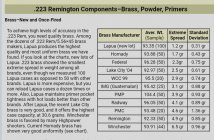I'd say you are over pressure for that barrel. I'd doubt the 41 primer is the issue, as it would not be the cause of the pressure - as there is seldom a velocity change of more than 30 FPS between primers in the .223/.556. If anything, the leaked primer released some of the excess pressure. Had the primer not leaked - pressure would have been higher. That said, viewing all the 69 Sierra loads with various powders in the Sierra manual and Hodgdon manual, they all show max velocities in the 2,940 to 2,950 range, with TAC showing the highest velocity. Tac burns a bit faster than BLC2, though running at 2,900 and dumping straight from the hopper from the Dillon, as you suggest, could add to the problem, which could be combined with a very slight velocity increase from the 41 primer. My Dillon hoppers are not capable of keeping charges to within 2/10th of a grain consistently - even with BLC2. I'd be inclined to back that off a full grain - at least. Even then, you will be running warm. I know that I have a few barrels that are incapable of running a 69 with Varget at Sierra's recommended accuracy load of 25.3 grains of Varget. In one of my barrels, I end up with what you just did, though Sierra says velocity "should" be around 2,750, my barrel couldn't take it. I was using Remington 7 1/2 and Federal A/R Match primers - not the 41's.











